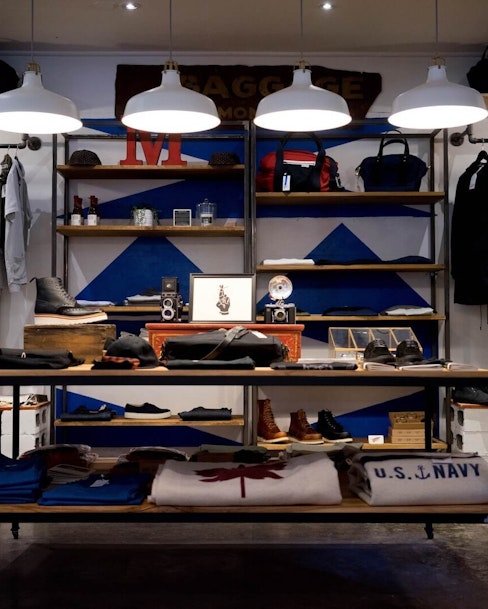Blog
4 ways to create in-store experiences that drive results

If you own a brick-and-mortar business, you can’t always compete with the convenience and selection of online stores. To drive sales, you need to give people a compelling reason to walk through your door.
In-store experiences can help you do just that. Many of the nation’s largest retailers are transforming their stores into more than just places to buy things. Here are some examples of this trend — and ways businesses on leaner budgets can follow suit:
This is a guest post from payments company Square.
Posted on March 2, 2022
The five-star hotel treatment
Some Nordstroms have “concierges,” employees who can give shoppers local restaurant and sightseeing recommendations. Customers can also have one-on-one consultations with personal stylists, get their hair done, and have purchases delivered to their hotel if they’re visiting from out of town.
Think of ways your business can do more with your expertise. If you’re a boutique, consider creating a personal stylist experience. Allow clients to book appointments and have a spread of merchandise ready for them when they come in. If you’re an athletic-shoe store, provide personalized consultations to recommend running events you think will suit each customer.
Any way you can leverage your expertise is a selling point for coming into your store versus shopping online.
Retailtainment
Retailtainment — that is, providing consumers with some sort of entertainment as part of the shopping experience — has been around for decades. But major retailers are now taking it to the next level.
A shopping center in Minnesota, for example, is building a 50,000-square-foot indoor water park. Walmart hosts the Professional Bull Riders at stores across the country. And National Geographic is creating “interactive exploration centers” worldwide (the first one is slated to open in Shenyang, China, this year).
While these types of blowout experiences are no doubt expensive, they drive serious foot traffic. And when coupled with in-store product demos, they skyrocket sales. Walmart Research says in-store sampling quadruples product purchases.
While it’s unlikely you’re going to build water slides or wrangle bull riders, you can still experiment with retailtainment at your business. Try playing host to workshops, guest speakers, or local bands. Make sure to integrate product demos (ideally with discounts) as part of the event.
Reimagine your space
Shopping and lifestyle continue to merge. Toward that end, businesses are now rethinking how to use their storefronts. Make your store a destination, not just a place to buy things.
First and foremost, you want your store to be a space that customers enjoy. Whimsical design, delicious smells, and great tunes are crucial. Studies have shown that the right music can make customers spend up to nine percent more. Learn more about the impact of music on sales here.
You might also think about adding new additions to your space. Staples, for example, announced recently that it would partner with office-sharing startup Workbar to convert a portion of its brick-and-mortar locations into workspaces. Tom’s flagship in Venice Beach includes a coffee shop and juice bar.
Your store may not need a 24/7 dedicated addition to your space. Perhaps it’s hosting a coffee stand outside during peak caffeinating hours, or a flower shop pop-up around holidays like Valentine’s Day and Mother’s Day. Any way you can give customers an additional reason to hang out at your business can drives sales.
Make your store a destination, not just a place to buy things.
Display-only stores
It may seem counterintuitive, but it’s effective to not actually sell items in person. An emerging retail trend is the “unstore,” storefronts that exist solely to demo products.
Samsung’s Manhattan flagship, for example, doesn’t even sell the company’s devices. If shoppers want to purchase something, they have to go online. eCommerce-focused brands like Bonobos and Warby Parker are doing something similar, saving on the costs of onsite stockrooms by only carrying samples to try on at some retail locations.
If going all-in on a display-only storefront isn’t for you, try it out at events or pop-ups that you participate in, or just with certain larger pieces of merchandise. It spares you the hassle of having to lug around your products and paying for inventory storage space.
About Square
Square creates tools that help sellers start, run, and grow their businesses. Square enables sellers to accept card payments and also provides reporting and analytics, next-day settlement, and chargeback protection. Square’s point-of-sale software and other business services help sellers manage inventory, locations, and employees; access financing; engage customers; and grow sales.
Ready to get started?
See how Soundtrack works for you and your store. Get our most exclusive features with a no obligation 14 day trial, unlocking everything available in Soundtrack Unlimited.
Related articles

Enterprise Music RFP: Choosing a Commercial Music Service

Apple Music for Business is Gone (Use This Alternative)

Bar and Restaurant Revenue Statistics, Trends, and Predictions

15 Ways to Increase Restaurant Sales and Customer Retention

What Is a Public Performance License? Everything You Need to Know

5 Music Apps for Bars and Restaurants